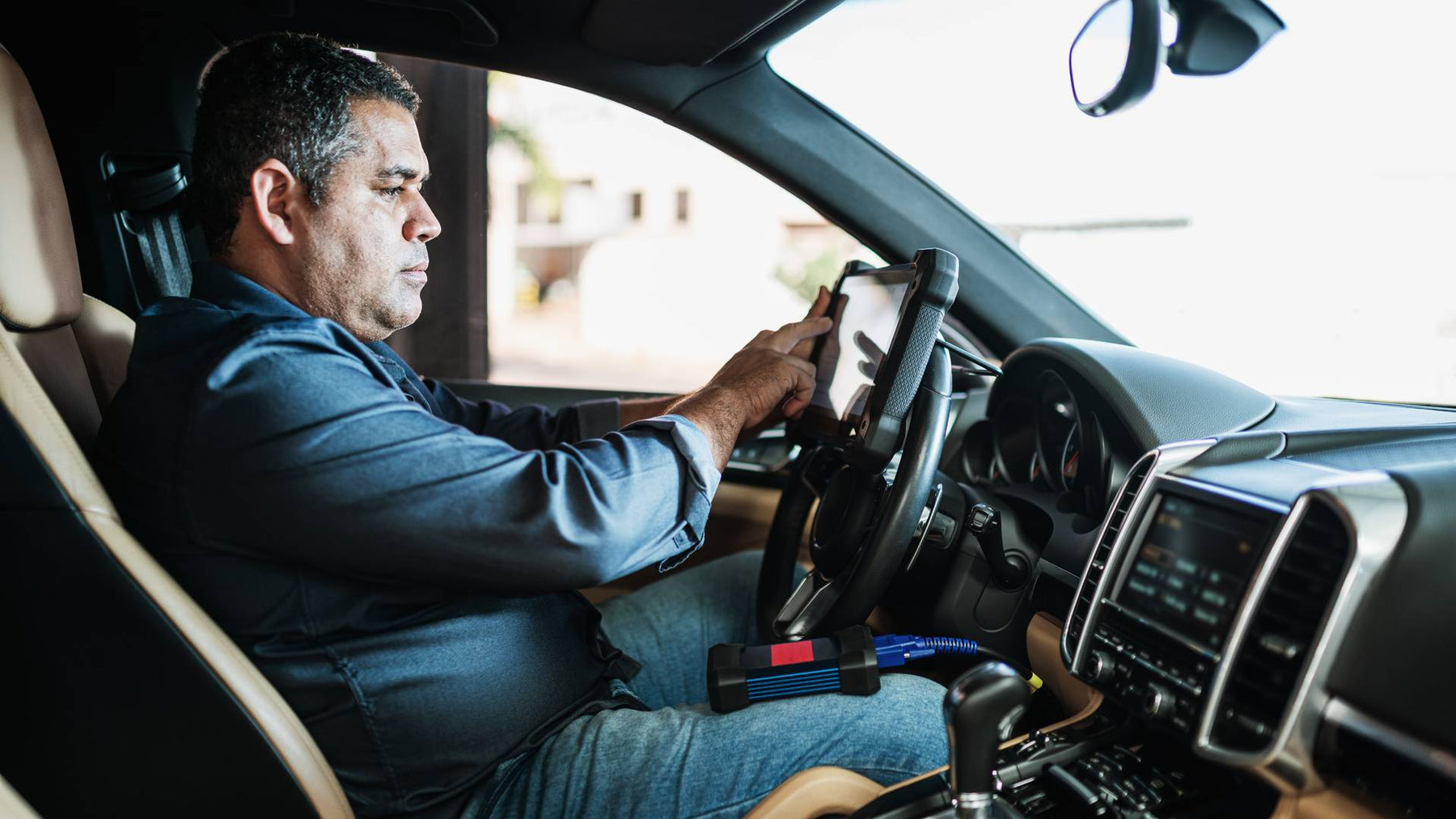sales@obdprice.com

What is OBDII?
On-board diagnostics (OBD) refers to automotive electronic systems that provide vehicle self-diagnosis and reporting capabilities to service technicians. OBD enables technicians to access subsystem information for performance monitoring and analysis of repair needs.
OBD is the standard protocol used by most light-duty vehicles to retrieve vehicle diagnostic information. The information is generated by the engine control unit (ECU or engine control module) within the vehicle. They are like the brain or computer of the vehicle.
What is the difference between OBD and OBD II?
Simply put, OBD II is the second generation of OBD or OBD I. OBD I was originally connected externally to the car's console, while OBD II is now integrated within the vehicle itself. The original OBD was used until the invention of OBD II in the early 1990s. Now Autel scanners support most OBD II vehicles from 1996 and later.
Where are the OBDII ports located?
The vehicle's standard OBDII port enables quick connection of the scanner to the vehicle, and in a typical passenger car you will find the OBDII port on the underside of the dashboard on the driver's side of the car. Depending on the vehicle type, the port may have a 16-pin, 6-pin, or 9-pin configuration.
What data is accessed from OBDII?
OBDII provides access to vehicle status information and diagnostic trouble codes (DTCs), allowing mechanics to accurately diagnose faults, quickly inspect the vehicle, and repair faults before they become major problems.
With the Autel scanner tool, whether connected to the vehicle via a wired OBD II interface or wirelessly via Bluetooth, you can access data such as: powertrain (engine and transmission), emission control system, vehicle identification number (VIN), Calibration identification numbers, ignition counters, emission control system counters and more.
The fault codes that appear in the Autel scanner: P = powertrain, C = chassis, B = body, U = network, engineers can further determine the problem based on this information.
OBD-II 10 modes
| Mode (hex) | Description |
| 01 | Request current powertrain diagnostic data |
| 02 | Request freeze frame information |
| 03 | Request emissions-related diagnostic trouble codes |
| 04 | Clear/reset emissions-related diagnostic information |
| 05 | Request oxygen sensor monitoring test results |
| 06 | Request on-board monitoring test results for specific monitored systems |
| 07 | Request emission-related diagnostic trouble codes detected during current or last completed driving cycle |
| 08 | Request control of on-board system, test or component |
| 09 | Request vehicle information |
| 0A | Request emissions-related diagnostic trouble codes with permanent status after a clear/reset emission-related diagnostic information service |
The historical journey of OBD
- 1968 - Volkswagen introduces the first OBD computer system with scanning capabilities.
- 1978 - Datsun introduces a simple OBD system with limited non-standard features.
- 1979—The Society of Automotive Engineers (SAE) recommends a standardized diagnostic connector and diagnostic test signal set.
- 1980 — General Motors introduces a proprietary interface and protocol that enables engine diagnostics to be provided via an RS-232 interface or, more simply, by flashing the check engine light.
- 1988—Standardization of on-board diagnostics occurs in the late 1980s following SAE's 1988 recommendation for a standard connector and diagnostic set.
- 1991—California requires all vehicles to be equipped with some form of basic on-board diagnostic system. This is called OBD I.
- 1994 — California mandates that all vehicles sold in the state starting in 1996 must be equipped with SAE-recommended OBD (now called OBDII). This stems from the desire to conduct comprehensive emissions testing. OBDII includes a series of standardized diagnostic trouble codes (DTCs).
- 1996 — OBD-II becomes mandatory for all cars made in the United States.
- 2001 — EOBD (European version of OBD) becomes mandatory for all gasoline vehicles within the European Union (EU).
- 2003 - EOBD becomes mandatory for all diesel vehicles in the EU.
- 2008 — Starting in 2008, all vehicles in the United States must implement OBDII over a controller area network as specified in ISO 15765-4.
Summarize
OBD ports are important for vehicle health, safety, and sustainability. Whether you are an individual, a family, or a professional car mechanic, learning to use a scanner to perform regular inspections and maintenance on your vehicle is an effective way to extend the life of your car.

